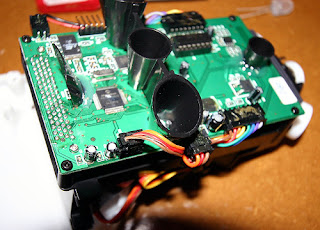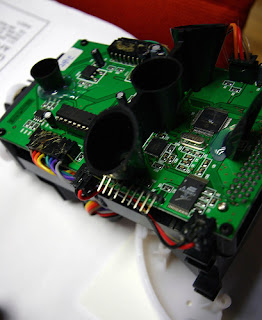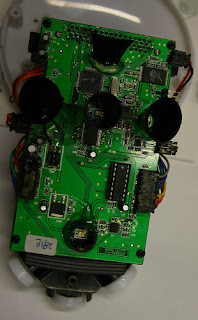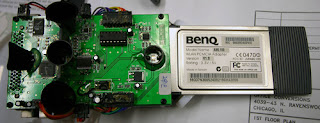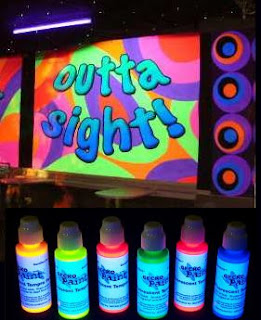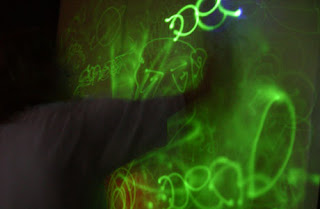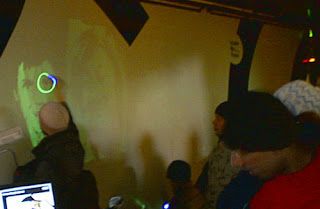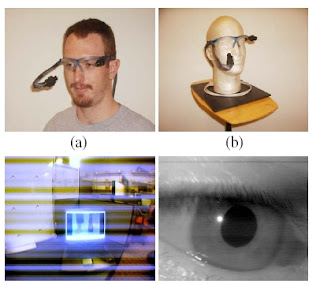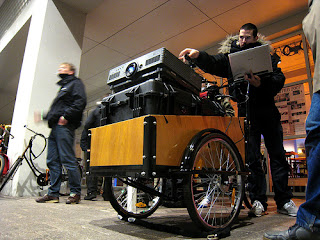This is the best and most interesting work that I have seen in a very long time, and I really want to try and replicate it, and then try to add to it, and attempt to make something a little more interesting. "In its simplest form the Laser Tag system is a camera and laptop setup, tracking a green laser point across
the face of a building and generating graphics based on the laser's position which then get projected back
onto the building with a high power projector." (http://muonics.net/blog/index.php?postid=15)
Ian Hunter
Digital Arts and Music Technology
LASER
My original intentions were to recreate the project from the creators at the Graffiti Research Lab (http://graffitiresearchlab.com/) and then change it to create a different project. This would obviously be on a much smaller scale, as the equipment that they used cost around £5000.
Conceptualisation of the work.
This is a really nice way to tag on any surface, or just draw random pictures with a laser pen. I wanted to try and use eye tracking hardware in place of the laser. I'm not sure if this is possible as the open source software that is provided on there site is only designed to track a laser beam, and no other source of light or hardware, although I am hoping that the program can be recoded to track anything as long as it is bright enough.
Describe and depict what the actual concept of the etude is.
I want to recreate this laser tagging system, but instead of using a laser beam that the computer then tracks and draws, I have been looking into eye tracking software and hardware. I have found a DIY version which is relatively cheap, and looks fairly easy to create. I would then have to change the program from the graffiti research lab so that it could track the movement of the eye. If I can create this piece of work, I think that it will be a truly interactive installation for all to enjoy. This should give the spectator a free reign to create the art work themselves, with this simple but effective platform.
Documentation of Technical and Artistic Process.
As of yet I have not been able to get the open source application that claims to be able to track a laser working, so I have not been able to document any findings. I am working on finding another mirror of the app, and gathering the relative equipment. I am going to look into building an eye tracking device from this link (http://www.makezine.com/blog/archive/2006/07/open_source_lowcost_realtime_e.html) which has the step by step, and costs etc. The plans are quite detailed, and with a steady soldering hand and some patients I think it may just work.


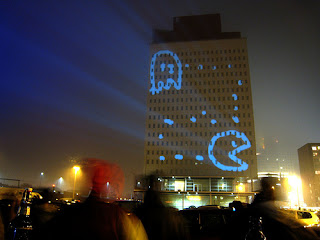
Pictures from:
http://www.flickr.com/photos/urban_data/396087351/
http://www.flickr.com/photos/urban_data/396087015/
http://www.flickr.com/photos/urban_data/396086969/
References
http://muonics.net/blog/index.php?postid=15
http://research.eyebeam.org/projects
http://research.eyebeam.org/projects
http://www.instructables.com/id/EIDH3WPPZSEPD7QVIA?ALLSTEPS
http://www.txtualhealing.com/
http://www.instructables.com/id/EIDH3WPPZSEPD7QVIA?ALLSTEPS
http://www.tobii.com/
http://www.bunnyfoot.com/services/eyetrackingsales.html
http://www.cs.uoregon.edu/research/cm-hci/EyeMusic/
http://www.perspectum.com/eyeresponse/index.htm
http://eyebeam.org/
http://www.makezine.com/blog/archive/2006/07/open_source_lowcost_realtime_e.html
http://hcvl.hci.iastate.edu/cgi-bin/openEyes.cgi
http://hcvl.hci.iastate.edu/cgi-bin/openEyeswiki/index.cgi?MobileEyeTrackerConstruction
http://simplifierlab.com/mt/archives/2006/07/roll_your_own_eye_tracking_tes.php
http://www.perspectum.com/eyeresponse/index.htm
How successful is this etude.
I think that this will be my final project, as it has interested me the most out of all of my research and etudes. I will be updating this post with any technical advances that I may have over easter, and the following weeks, because as of yet I have not got any of the equipment needed, and it is proving very hard to track down.

